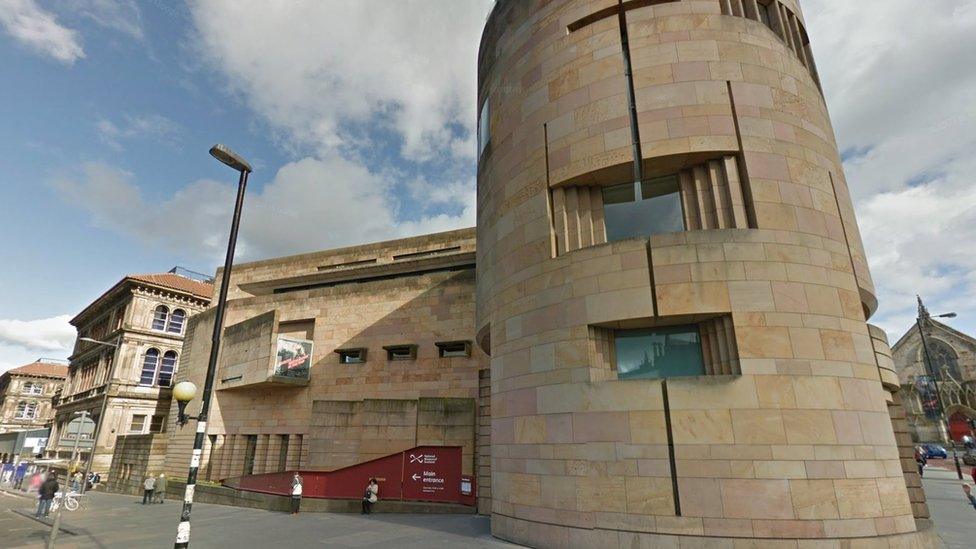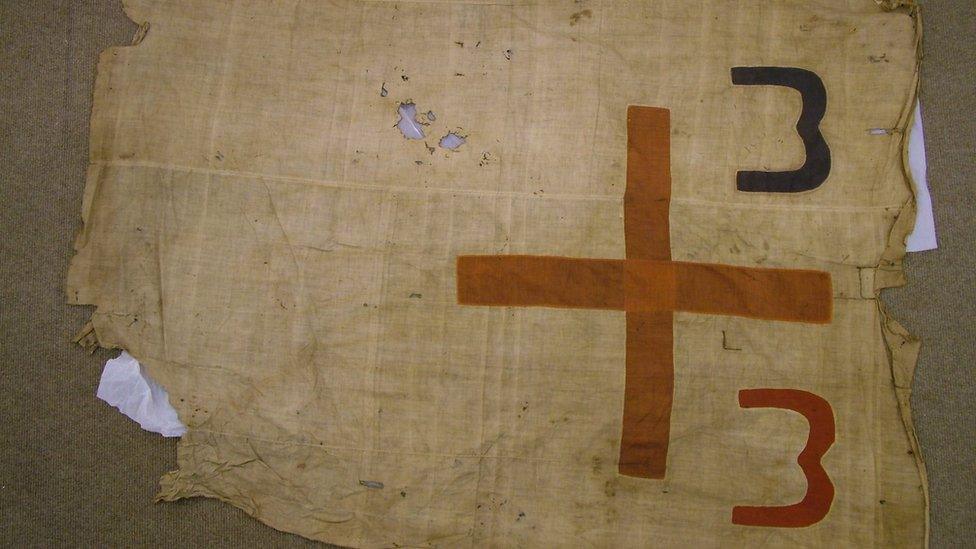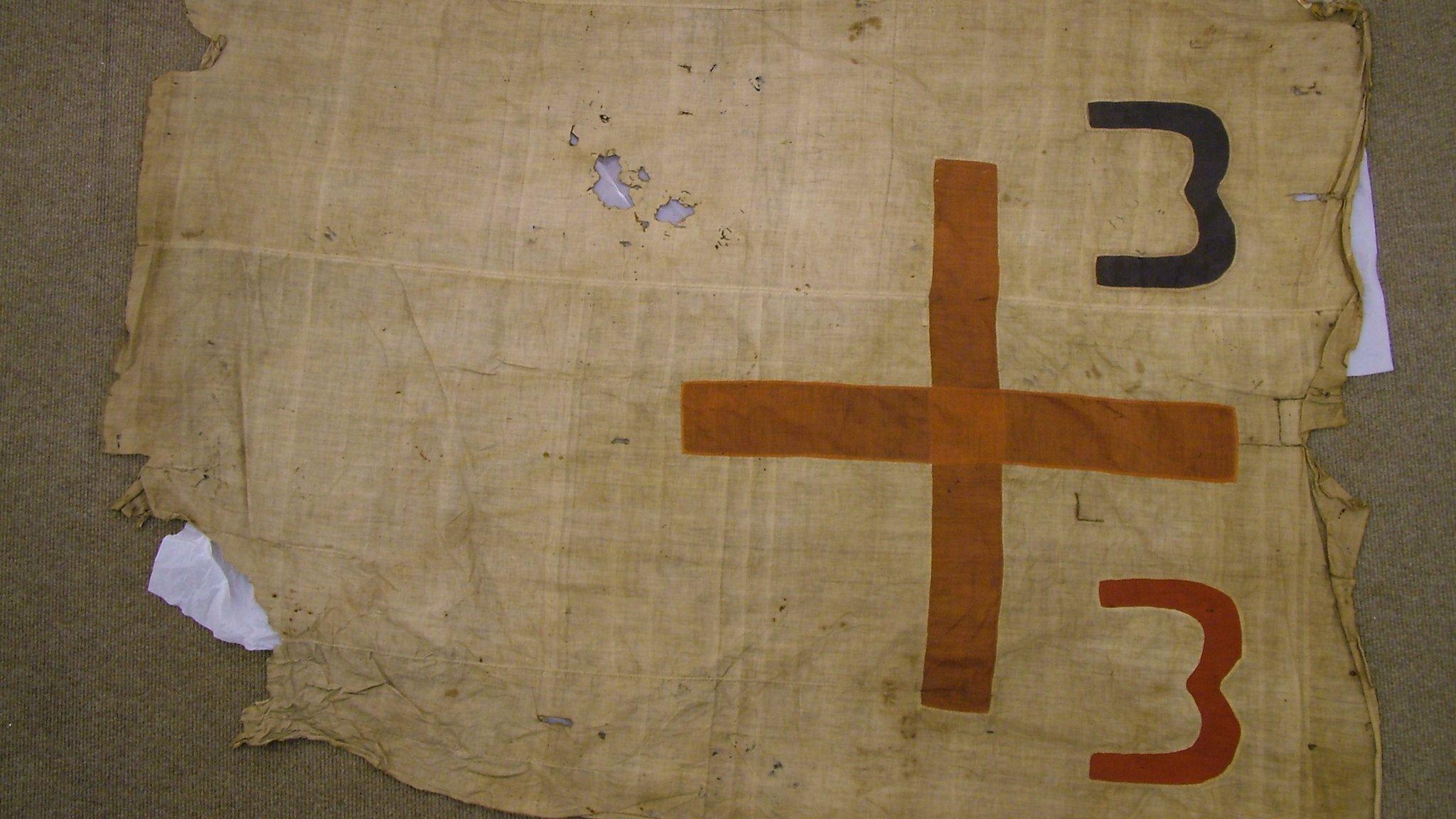No formal request for return of Native American skulls
- Published

The skulls are held by the National Museum of Scotland
Museum officials have not yet received a formal request for the return of the skulls of two Native American people taken from Newfoundland 200 years ago.
The National Museum of Scotland was contacted over the remains of a Beothuk chief and and his wife a year ago.
Campaigners claim they were taken from their graves and sent to a collector in Edinburgh in the 1820s.
The museum said it was "continuing a constructive dialogue" with the Canadian government.
Appropriate conditions
Despite an indication last year from the Canadian department of heritage minister Melanie Joly of an intention to formally request repatriation, it has noy been made.
The skulls, thought to belong to chief Nonosbasut and his wife Demasduit, are not on display in the Scottish museum.
It said they were stored in environmentally-appropriate conditions at its collection centre.
Native American campaigner Chief Mi'sel Joe, of the Miawpukek First Nation, has visited Edinburgh and been allowed to see the skulls, which he says were taken from a grave site near Cormack.
The chief has led calls for the return of the remains since 2015.
Nonosbasut is believed to have been killed by John Peyton Jr and his men in 1819.
His wife Demasduit was captured and for a time lived with a Church of England priest. She died of tuberculosis in 1820 and her body was recovered by her tribe and buried alongside her husband.
It is thought the tribe died out within a decade of her death.
Common humanity
The National Museum of Scotland said the pieces in its collection came to Scotland through the actions of William Epps Cormack.
He was born in Newfoundland and educated in Glasgow and Edinburgh.
A collection of 11 pieces were sent to Professor Robert Jameson of the University of Edinburgh and entered into its collections on 15 March 1828.
Six items were subsequently transferred into the permanent collections of the National Museums Scotland in the mid-nineteenth century.
In addition to the skulls, the museum also has a model birch bark canoe, two birch bark dishes, and a birch bark drinking cup which it is thought was part of the original collection.
Two years ago, SNP MSP Michael Russell asked a question in parliament about what discussions the Scottish government had with the National Museum of Scotland over the request to repatriate the remains.
Mr Russell said: "The keeping of skulls is surely not a 21st-century response to the common humanity that we share with these two individuals, who were the last recorded individuals of this tribe, which was wiped out probably because of environmental pressures on their hunting grounds, as well as by cultural pressures."
Culture Secretary Fiona Hyslop said the museum had met those wishing the Beothuk remains to be repatriated to Canada and it had explained the "established mechanism for making a formal repatriation request".
The formal procedure requires requests to be made by a national government, supported by a national museum and by a community with "direct genealogical descendant of the community whose remains are under claim".
For tribes like the Beothuk which have ceased to exist a claim can be made by a group that "continues to share the same culture (spiritual beliefs, cultural practices) attributed to the community whose remains are under claim".

The Maori war flag was handed over for repatriation to New Zealand
Last year, councillors in the Borders returned a Maori war flag to New Zealand after an approach from the New Zealand museum and descendants of "key parties" involved in the battle.
The flag was taken by Crown forces from a Maori tribe during the Battle of Omaruhakeke in 1865.
The exact details of the flag's journey to the south of Scotland remain something of a mystery.
It was donated to Hawick Museum in 1921 by local artist Tom Scott.
In 1999, a relic believed to have been worn by a Sioux warrior killed in the 1890 Wounded Knee massacre, external was returned to its native land from Scotland.
The ghost dance shirt was officially handed back to descendants of the battle victims at a special ceremony in South Dakota.
The relic was displayed for more than a century in the Kelvingrove Art Gallery in Glasgow after George Crager, a member of Buffalo Bill's Wild West Show, gave it to the museum in 1891.
- Published28 February 2017

- Published18 October 2016
